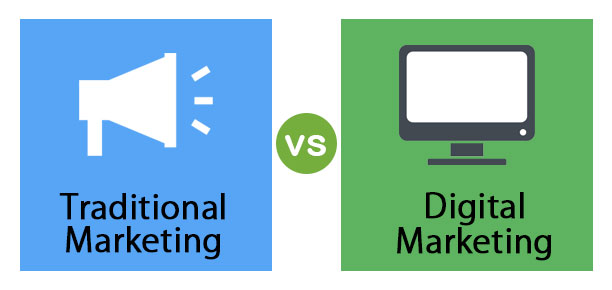Digital marketing and traditional marketing are two different approaches to promoting products or services. While traditional marketing involves the use of print media, TV and radio advertising, billboards, and other traditional media, digital marketing leverages the Internet and digital technologies to reach and engage potential customers.
In this blog, we will explore the differences between digital marketing and traditional marketing, their advantages and disadvantages, and how businesses can choose the most effective marketing strategy for their needs.
Targeting
Traditional marketing casts a wide net. For instance, TV commercials or billboards are seen by everyone who watches the show or drives past the billboard. In contrast, digital marketing allows businesses to target specific audiences based on their interests, demographics, behavior, and location. By using digital marketing tools like social media advertising, search engine optimization (SEO), and email marketing, businesses can reach people who are more likely to be interested in their products or services.
Cost
The cost of traditional marketing can be expensive. For instance, running a TV commercial or a full-page ad in a newspaper can cost thousands or even millions of dollars. On the other hand, digital marketing can be more cost-effective. For example, businesses can use social media advertising to reach a highly targeted audience with a smaller budget.
Measurability
One of the significant advantages of digital marketing is that it is highly measurable. With tools like Google Analytics, businesses can track how many people visit their websites, where they come from, what pages they visit, and how long they stay. This data can help businesses improve their marketing strategy and make data-driven decisions. In contrast, traditional marketing can be challenging to measure. For example, it can be challenging to determine how many people saw a billboard or a TV commercial and whether it had any impact on sales.
Check out the Detail on How PPC Advertising Marketing brings measurable results.
Interactivity
Digital marketing offers a high level of interactivity. For instance, businesses can engage with customers through social media, email, and chatbots. This level of interaction can help businesses build a relationship with their customers, gather feedback, and offer personalized customer service. Traditional marketing, on the other hand, is a one-way communication channel, with little or no opportunity for interaction.
Speed
Digital marketing is faster than traditional marketing. For instance, businesses can launch a social media campaign in a matter of hours, while producing a TV commercial or a print ad can take weeks or even months. This speed allows businesses to respond quickly to changes in the market, launch promotions or campaigns in real-time, and stay ahead of the competition.
Global Reach
Digital marketing has a global reach. With the Internet, businesses can reach potential customers from all over the world. This global reach can help businesses expand their market and increase their sales. In contrast, traditional marketing is often limited to a specific geographical area.
Creativity
Both digital and traditional marketing requires creativity, but digital marketing offers more opportunities for innovation. For example, businesses can create interactive content, videos, and social media campaigns that engage audiences in new ways. This creativity can help businesses stand out in a crowded market and create a lasting impression on their customers.
In conclusion, digital marketing and traditional marketing are two different approaches to promoting products or services. While traditional marketing is still an effective strategy for some businesses, digital marketing offers several advantages, including targeting, cost-effectiveness, measurability, interactivity, speed, global reach, and creativity. Ultimately, businesses should choose the marketing strategy that best fits their needs, budget, and goals.
